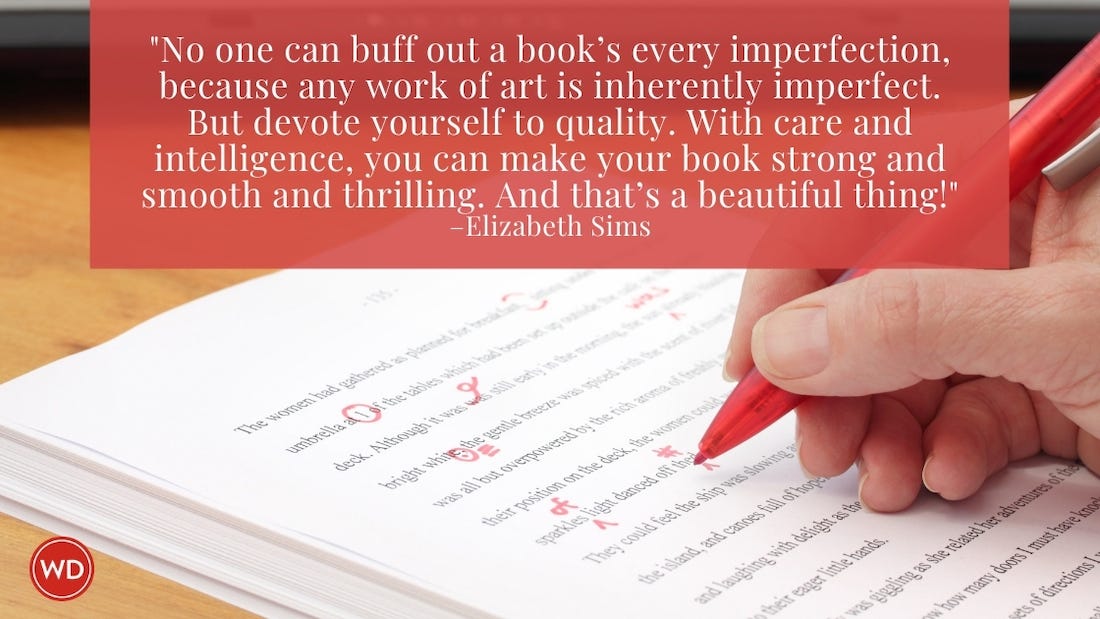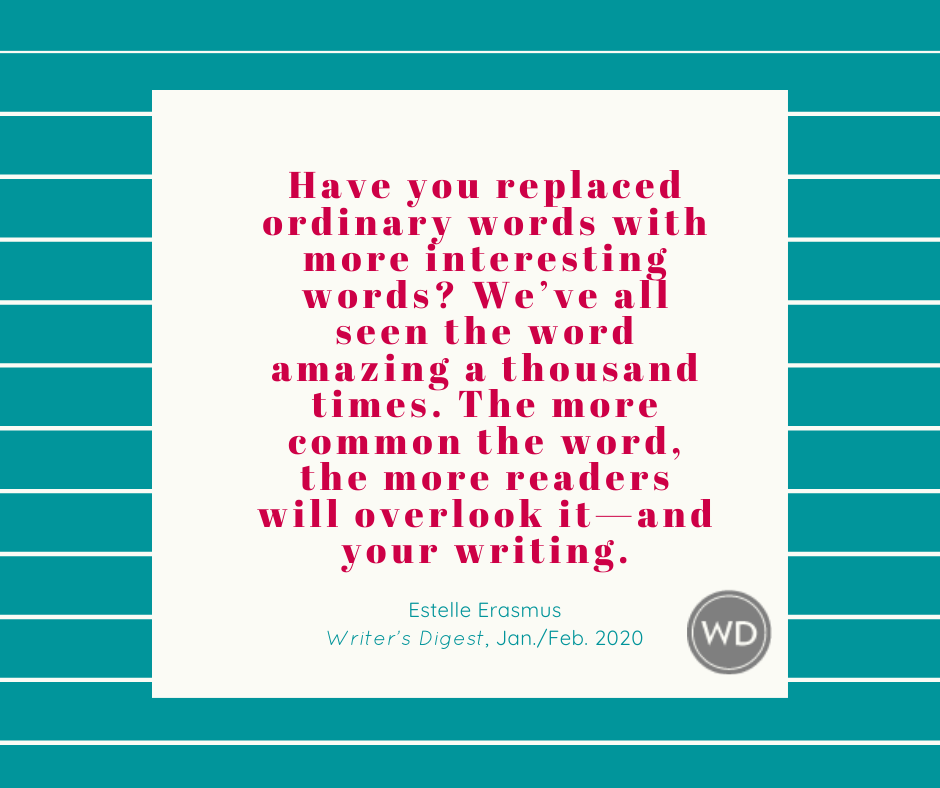Create Your Own Bad Guys and Sleazy Protagonists
The following is a guest post by our WD intern, Laura Wooffitt. When writing any genre, the character that takes center stage, and often most of the beginning writer’s attention,…
The following is a guest post by our WD intern, Laura Wooffitt.
When writing any genre, the character that takes center stage, and often most of the beginning writer's attention, is a likable protagonist. It is really difficult to write believable and page-turning, unlikable protagonists because they can become unpredictable. If they are to be redeemed, the payoff must be convincing and hard to achieve. Although, there are many authors who have tried it and have done it well. Think Lolita. How do you do it and keep the reader interested? How do you make it original?
Try this writing exercise recommended for writers of all stages by Alissa Nutting, the debut author of Tampa, a novel told in the compelling voice of sociopathic, sexual predator Celeste Price.
1. Create your character physically. Is your character male or female or something else entirely? How old is your character? Ex. Mina is 63 year old woman.
2. Create your character's fetish. The weirder the better! Ex. She likes to eat dogs.
3. Create where your character lives. Ex. She lives in a run-down part of the big city where there are always trash and leftovers lying around for stray dogs to find. She won't hurt someone's pet though, just the ones no one wants or are uncared for.
4. What would your character buy or browse for in K-Mart? Substitute Wal-Mart, Kroger, and Meijer as needed. Ex. She loves the pet section. She buys dog biscuits, dog food, dog toys, dog beds--anything to coax them to her.
5. Create an event that upsets the character's equilibrium. Basically, create the catalyst for the character's motive. Ex. She accidentally eats her neighbor's pet, and she suspects that person knows. Ex. The animal shelter or the pound starts rescuing dogs from her street.
Now you have created your memorable character and set up the moment where things go awry. Use this exercise for other evil characters, too, like the antagonists who need just as much time and care as protagonists.
If you need more help with unlikable protagonists or creating villains, take a look at WD's Jessica Page Morrell and her excellent how-to Bullies, Bastards & Bitches, a guide to exploring your character's sinister side.
* * * * *
Luckily, fictional characters are not much like us. And luckily for the world of fiction, characters exist who don’t try to be nice; in fact, they sometimes go out of their way to make other characters’ lives miserable. Writers who want to add spice and conflict, and who want to push the boundaries of storytelling, will include characters that range from a bit odd, to selfish, to downright evil.
Just a note before we explore this character type: As readers, we are all familiar with unlikeable antagonists and villains. For example, thrillers, suspense, and Westerns often feature a villain, as Larry McMurtry does in his Pulitzer Prize-winning novel Lonesome Dove with the sociopathic Blue Duck. When Blue Duck is on the stage, the reader is afraid because whenever he appears, pain, suffering, and death for innocent and vulnerable characters usually follows.
Or, in the case of an antagonist, who is the person opposing the protagonist, he might be a decent sort, or he might be a creep such as an overbearing and demanding boss or a police captain with political motives...These qualities are only a few that you might choose if you’re dancing out on a limb and writing an unlikeable protagonist...
Because it can be risky creating an unlikeable protagonist, I would suggest that you try to identify and analyze these sorts of factors when you read stories that depict these types. For example, is the antagonist likeable? Is there a single protagonist in the story? Are the protagonist’s motives understandable? Does the ending have a takeaway message about morality or humanity? Then ask yourself if you should emulate these techniques.
Sometimes unlikeable protagonists have redeeming qualities mixed in with their negative qualities, which makes them enormously complex. One such character is Captain Woodrow Call of Larry McMurtry’s Lonesome Dove. The story focuses on a cattle drive from Texas to Montana, but it’s actually about the relationships among a group of men, some of whom are retired Texas Rangers. The two main characters are Captain Woodrow Call and Augustus McCrae, who serves as a foil by contrasting Call’s dominant qualities and, as a result, making him better understood. (A foil is a character who sharply contrasts with the protagonist, thus emphasizing both characters’ primary traits.) Gus is lazy, loving, loquacious, witty, and happy-go-lucky, whereas Call is all business—grim, close-mouthed, and cold-hearted. Call is a no-nonsense, hard-working taskmaster who tolerates little, and seems to tolerate Gus even less. He especially demonstrates his Grinch-sized heart when, for most of the story, he refuses to acknowledge his son’s paternity. However, Call is also an able manager and leader of men, and he’s practical and principled as he keeps his promise to Gus and backtracks hundreds of miles to bury his friend’s body in Texas. He also acknowledges his son in an offhand way by the story’s end, which is a major change in the character arc of a man like Call. In other words, he’s enormously complex.
The point is that sometimes unlikeable characters are understandable or redeemable, and sometimes they are such scoundrels that we’d shield our children from them. You have many choices about how dastardly, cranky, odd, subversive, or kinky to make this type of character. Your only constraint is that the character must be compelling, and that if he’s redeemable he must possess at least one positive trait.
When you start writing fiction, even if you know a good deal about the story line, you will always begin with characters. You’ll want to have a feel for the characters and perhaps craft biographies to understand them better. With a character biography, you have a starting point to work from, but you should leave room for flexibility in case your character starts developing in ways that you first didn’t imagine...
As you keep refining the story, you make decisions on just how likeable, unlikeable, edgy, or evil your characters will be. For most fiction writers, by the time you’ve been working with characters for several months, they start taking up residence in your imagination. Sometimes they start whispering suggestions to you, and sometimes they’re as difficult to control as a toddler in a supermarket just before naptime. This delightful intimacy with your characters can only come about if you understand their hierarchy of traits, their contrasting traits, their morality, and factors from their backstory that have shaped them.
* * * * *
Don't forget! You can buy full access on creating monsters in your writing from your new best friend Bullies, Bastards & Bitches by Jessica Page Morrell.
Cris Freese is a technical writer, professional book editor, literary intern, and the former managing editor of Writer's Digest Books. Cris also edited the annual guides Children's Writer's & Illustrator's Market and Guide to Literary Agents, while also curating, editing, and writing all content for GLA's online companion. crisfreese.com






